SCORE:
Gameplay: 9
Graphics: 9
Sound: 9
Overall: 9
Pros: Even the tutorials and early game display amazing graphics and a realistic and involved game.
Cons: Extremely unintuitive and steep learning curve for someone that doesn’t digest the manual.
We recently tried out the closed beta of the new space shooter FPS Elite: Dangerous, the updated modern sequel to the original Elite title launched in 1984. It was a smash hit back then with its level of complexity and hard-core gameplay and we were eager to see whether the new iteration capture the realism of the original. To precursor this article before we talk about what we discovered in our First Look, we should say that at this stage we had already put in around an hour of gameplay doing the tutorials to get to grips with the game, then we recorded some in game "play" with the intention of letting you guys see the more fun aspects beyond the tutorial, unfortunately due to the difficulty of this game, that video resulted in simply flying around for a while trying to work out how to travel to new locations. The final result was that we went back to the tutorials to record the first four missions and give you guys an idea of just what you can expect as a first timer.
So in the spirit of first impressions, we will lead with this: Elite: Dangerous is extremely unintuitive, difficult to pick up and play and has a far steeper learning curve than other games within the genre and was for us a constant source of frustration. Our experiences here touch on both our initial run through the tutorials as well as our secondary playthrough for the accompanying video for this article.
Mission one guides players on how to leave the docking station, return and land your ship, and by "guides" we use the term very loosely. The initial issue as we showed in the video is that the controls themselves and particularly intuitive from what we are used to, that isn’t to say that they are great on don’t work particularly well, just that accessing menus and working out how to activate features and systems was more trial and error than by any guidance.
Once we worked out how to launch our ship and the basics of control (W and S for forward and backwards thrusters, A and D for the left and right Yaw and the mouse controls for the Roll and Pitch), we managed to fly out of the station and then prompted to turn around and head back in. Interestingly and in all honesty more realistically you have to contact the station first and gain permission to enter, easily done through your console once you work out how to do it, a gain the lack of guidance in this tutorial was a little frustrating and resulted initially in all is fine gain without permission and getting destroyed. Once inside you are given a docking pad to land on, but don’t make them stick of choosing any because you are given a warning to stop loitering before you are, once again, destroyed.
Landing was our first minor frustration. When you approach your landing pad and get close enough the controls and navigation map change to a more precise landing GUI system, allowing you to manoeuvre your ship accurately to the right spot. The problem was at this stage we hadn’t realised that Q and E also allowed us to strafe, or that we even had the option to ascend (R key) or descend (F key) as this wasn’t mentioned anywhere in the tutorial. Interestingly in the Open Play that we tried out once you launch your ship you are given a checklist of your flight systems that you have to go through, simply by holding the key that corresponds to one of the controls long enough for it to be checked off the list essentially giving you a heads up of what the actual game controls are (whilst you can check in the game Options under Controls, it is quite overwhelming as to how many options there are and practically impossible to remember them all).
Irritatingly neither on our first tutorial play through, our trial in the Open Play game or in our second tutorial attempt we still can work out how to ultimately land and dock the ship even after cycling through the various options in our menus.
Combat and targeting comes next with two different tutorials, one where you simply target and destroy floating barrels that don’t give you too much of the problem as their stationary, but highlights the difficulty of a 2-D map in a 3-D environment. Whilst at first we really couldn’t get our heads around the location of things on the map, by the time we came round to the second tutorial on trying this mission out again which started to get to grips with it a little more. For the combat we will put up against a NPC ship, thankfully it doesn’t start attacking until you fire off a shot, giving us the chance to line up behind it and get the advantage at which point it begins to fly off trying to outmanoeuvre you and, if you get the chance, return fire. It’s at this point that the controls will make or break most players as with realism comes complexity and it’s very easy to get lost as you roll around, accidentally overshooting the target with too much for throttle and more. That said we did manage to destroy the target.
The last mission we tried out, and our particular bone of contention, is travelling between systems and galaxies. The game prom shoe on how to enter super cruising speeds for faster travel and then how to lock onto a new system and use the hyperspace to quickly travel to the new location (which does look really cool). Our problem, one that we still didn’t manage to work out, was that once we arrived in a new system we couldn’t work out how to jump to the next closest destination such as planets, new stations, etc. and it was due to this single fact that we ended up recording the tutorial is as opposed to the Open Game given that we couldn’t find anything to do because we couldn’t get anywhere once we left our initial star port.
So as we said the game is unintuitive, difficult, hard to pick up, definitely not for the casual and extremely frustrating. However, that said it was still for some bizarre reason extremely enjoyable and the complexity really makes you think that this game is going to have so much to offer to those that can travel between systems properly (not like us...) and we’re excited to see what other unique gameplay aspects the team will offer up in the future. Definitely one to get your hands on if you like FPS space shooter games.
Feel free to activate the INFO button below in order to find out more about Elite: Dangerous.
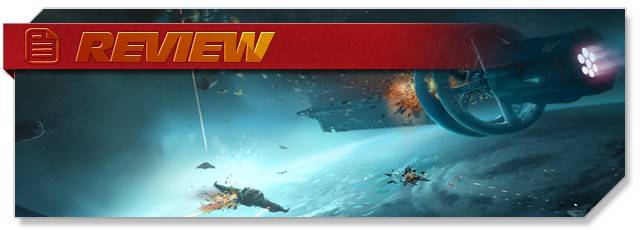
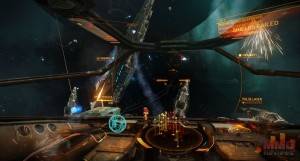
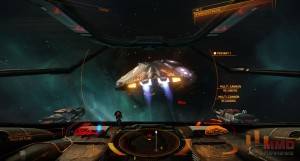
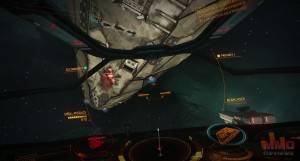
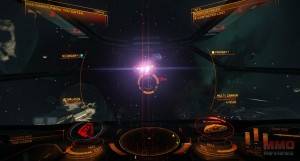


Deja tu comentario
You must be logged in to post a comment.